4 MIN READ
Early Season Corn Insects
May 28, 2019
Many insects are likely to call corn fields their home throughout the growing season. Some of these can be beneficial while others can harm your crop. Proper identification and management is a key for maximizing yield potential. Scouting fields early and often is the first step in implementing a successful management program. While scouting, it is important to note any insect activity. Insects may be feeding on the seed, roots or shoots. Three insect larvae are of importance to germinating seed and seedlings: seedcorn maggots, white grubs and black cutworms.
Seedcorn maggots can be found on every continent except Antarctica. Feeding and damage is generally more severe in years with cool, wet springs. The larvae are yellowish-white in color (Figure 1), are about 0.25 of an inch in length, have a pointed head end, and are legless with tough skin. As an adult, they are a grey-brown fly that is about 1/3 of an inch long.
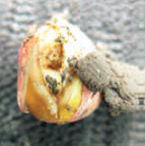
Injury Symptoms
- Burrow into seed and feed on it before germination
- Fed-upon seed fails to sprout
Problem Fields
- Most severe in wet, cold springs
- Corn following pastures
- Manure-applicated fields
- Land with high organic matter
- Freshly incorporated green material
Scouting
- Sample planting to VE
- Sample areas with poor emergence
- Dig up unemerged seed in 3 ft of row and examine for damage
- Sample 10 locations in a field
Management
- No rescue treatment exists; therefore, use of insecticidal seed treatments or seed-applied insecticides is recommended where the potential for above-threshold injury exists
White grubs (Figure 2) are broadly found across North America and can damage or kill corn seedlings by pruning roots and feeding on the mesocotyl. The most common white grub species in corn fields are annual, Japanese and true white grubs (Figure 3,4). The respective adults are the masked chafer, Japanese beetle and the May or June beetle. The larvae are creamy white, C-shaped and can be up to 1 inch long. They have six prominent legs on the fore end and the hind part of the body is smooth and dark. True white grubs, identified by a zipper-like row of hairs on the tail, are usually the most destructive because they remain in the larval or grub form for three years. Therefore, a field infested the prior year with true white grubs is likely to be infested the next year unless they are managed with a soil-applied insecticide. The true white grub adult is brown to brownish-black and emerges from May to June.
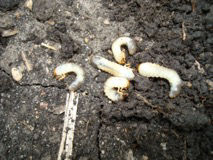
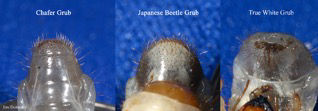
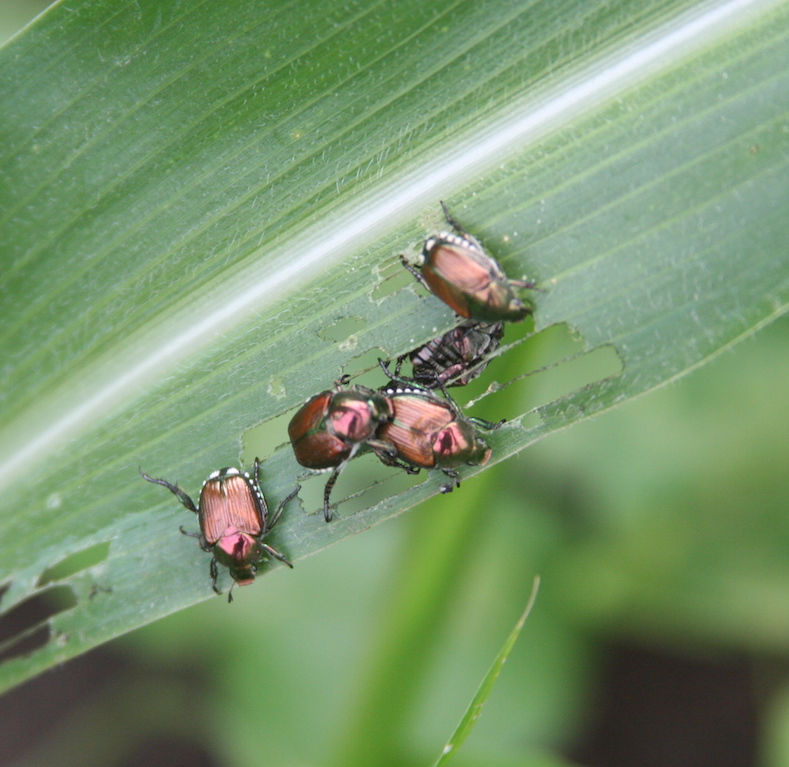
Black cutworms can be found throughout most of North America and are the most economically relevant species of cutworms (Figure 5). Black cutworm larvae can be up to 2 inches, vary in color from light gray to black, have granular-appearing skin and are most easily identified by the pair of dark tubercles found on each body segment.
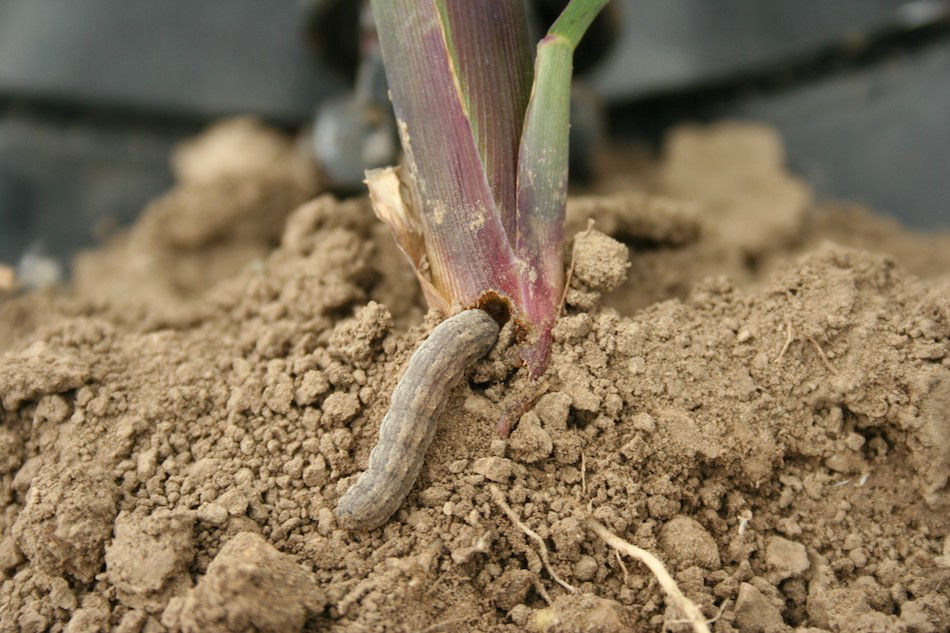
Symptoms of injury
- Larvae feed on corn at the base of the stem or underground, which can lead to clipping
Problem Fields
- No-till fields
- Fields prone to cool, moist soils
- Fields with heavy vegetation or residues during early spring
- Fields planted into sod, legume pastures, soybeans or small grains
- Late-planted corn
Scouting
- Scout through V5
- Examine 50 plants in five areas
- Look for missing plants, leaf discoloration or damage and clipped plants
- Determine percentage of stand that is damaged
Management
- If 3%-5% of plants have damage, an insecticide treatment is recommended
- Where a history of infestations exists, consider the use of products with SmartStax® technology or products with Trecepta™ technology.
Besides these three insects, there are several other insects that may be of concern in your area. Depending on your location and field conditions, other common early season insects may include wireworm, chinch bug, flea beetle, green stinkbug, billbug and grape colaspis. Your Channel Seedsman can assist you in identifying which insects may be causing issues in your field.
It is important to stay ahead of pests, and fields should be scouted on a regular basis to determine which insect pests are present. Treatment thresholds vary by state, pest, and stage of crop development. Consult your state’s extension entomology resources and/or your Channel Seedsman for local recommendations. If a threshold is met and a rescue treatment is recommended, the appropriate insecticide should be applied promptly and per label directions.
Brandon Beck
Agronomist
brandon.beck@channel.com